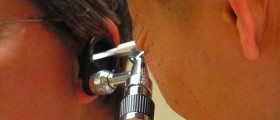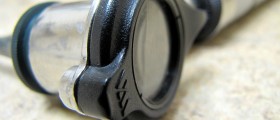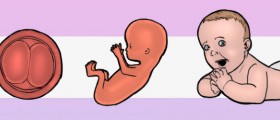
Before any further explanation can be given on the subject of ear drum perforation, one needs to know some basic information about the human ear.
This organ of hearing is actually a very complex system consisting of three main parts – the outer, the middle and the inner ear. The outer ear consists of the visible part of our ear and the ear canal, leading into the rest of the ear, having the ear drum at the end. Our middle ear contains two fluid-filled chambers and an auditory nerve. After this part, we have the inner ear, filled with air, with three little bones and the Eustachian tube, connecting the inner ear to our nose and throat.
The Human Ear Drum
As it was mentioned above, the ear drum is located at the end of the ear canal. It is an oval shaped membrane which has three layers. The outer layer of the ear drum is made of skin. After it, there is another fiber layer and the last one made of mucous membrane. Basically, our ear drum is the separation point between our outer and middle ear.
Once the membranes of the ear drum pick up the sounds we collect with the outer ear, it transfers them forward to the three bones, which amplify them and send them over to the inner ear. The sound signal then gets converted into electric impulses via numerous small hairs located in the inner ear.
All in all, our ear drum is crucial for our proper hearing. Any damage to it can result in complete hearing loss.
Reasons behind Perforated Ear Drum
In most cases, these small tears on the ear drum are caused by infections or traumas. Bacteria, fungi or viruses can trigger the infections, usually affecting the middle ear. Once the infection advances, it creates pressure on the ear drum, making it stretch and, eventually, it gets ruptured. As for traumas, many different accidents can lead to a perforated ear drum. For example, getting hit on the ear area, being exposed to loud noises or extreme pressure or even falling dangerously, are all issues which can lead to a perforated ear drum.
Signs of Perforated Ear Drum
Logically, smaller perforations on the ear drum are known to cause less severe symptoms than larger tears. Usually, the main signs of a perforated ear drum are pain and hearing loss. Alternatively, one may experience ringing in ears, balance problems, vertigo, discomfort etc. Also, mucus may appear to come out of the hurt ear. Moreover, when pus and blood come out of the problematic ear, this is a clear sign of an infection. Furthermore, if you do not heal a perforated ear drum, the area may get infected, making things worse.
Finally, smaller perforations heal on their own. During the healing process, your doctor may prescribe you painkillers and antibiotics. Sometimes, however, a procedure may be necessary, where the doctor will close the perforation with a patch or perform surgery, removing any foreign objects from the area and treating the injury adequately.

















Your thoughts on this
Loading...